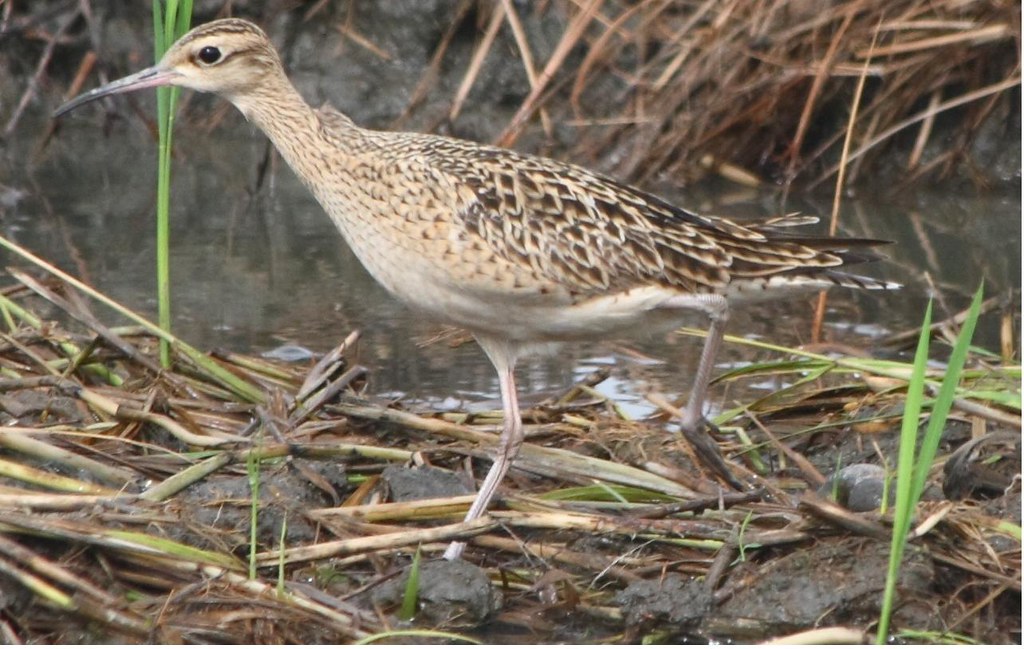
Little curlew, Numenius minutus, also known as the least whimbrel or the little whimbrel, the Siberian baby curlew, the pygmy curlew, or the dough-bird, photographed at Toucheng, Yilan County in the Republic of China (Taiwan).
Image: Wayne Cheng, 23 September 2007 (Creative Commons Attribution 2.0 Generic license) [velociraptorize].
Canon EOS 400D Digital ISO: 400, f/9, 300 mm, 1/640 sec
Question: This elegant Asian mystery bird is remarkable for several reasons. Can you tell me what makes this bird remarkable? Can you identify this species?
Response: This is an adult little curlew, Numenius minutus. This bird is the smallest member of the genus, Numenius, which is one of the most ancient groups of shorebirds. The curlews have a world-wide distribution and are usually long-distance migrants. The little curlew nests in Siberia and winters in northern Australia (and occasionally pops up in California as an autumn vagrant). Unfortunately, due to habitat destruction, two of the eight species in this genus are extinct: the slender-billed curlew, Numenius tenuirostris, and Eskimo curlew, Numenius borealis (the Eskimo (northern) curlew is currently the subject of an intensive search, which motivated me to present the little curlew, its surviving sister species, to you as a daily mystery bird).
Field marks that distinguish this species from similar birds that you may encounter in the same habitats:
- this species is similar to but much smaller than a congener, the whimbrel, N. phaeopus
- this species is has a slimmer build than the similarly-sized Pacific golden plover, Pluvialis fulva
- this species's bill is slimmer, shorter and less curved than that of the whimbrel; also distinguished from Pacific golden plover by its slimmer, downward curving bill
- this species has a conspicuous central head stripe that is narrow, and ranges from white to buff in colour, which distinguishes it from the (probably extinct) Eskimo curlew, N. borealis, which lacks this central head stripe
- this species's plumage has a golden tinge, which distinguishes it from the whimbrel
- this species has unbarred buffy underwings which distinguish it from the (probably extinct) Eskimo curlew, which has cinnamon underwings, and from the whimbrel, which has barred underwings
- this species has long blue-grey legs, which distinguishes it from the Pacific golden plover's shorter black legs
Here's a short video (NOTE: poor audio quality) that captures a little curlew feeding at Archerfield Airport in southeast Queensland, Australia in November 1994:
You are invited to review all of the daily mystery birds by going to their dedicated graphic index page.
If you have bird images, video or mp3 files that you'd like to share with a large and (mostly) appreciative international audience here at The Guardian, feel free to contact me to learn more.
.
email: grrlscientist@gmail.com
twitter: @GrrlScientist
